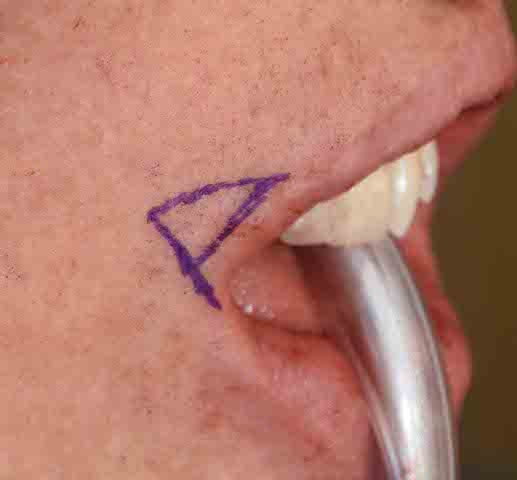The downturned mouth corner, while typically associated with the aging face, can also occur due to natural development. The outward impression it conveys, usually erroneous, is an unhappy or angry person. While injectable strategies can provide some temporary improvement by lifting effects, these are not permanent. They also are not overly effective in cases of more profound downturned mouth corners.
The surgical corner of mouth lift has been around since the 1950s. Despite its long history it has never developed widespread use because of the fear of indesirable scarring as well as the lack of surgical familiarity.
In the July 2020 issue of the journal Plastic, Reconstructive and Aesthetic Surgery an article was published on this topic entitled ‘A Combined Method of Oral Commissure Lifting For Perioral Rejuvenation in Asians’. In this paper the authors present their seven year experience in close to one hundred and sixty (160) patients with their corner of mouth lifting technique. Their approach consists of a skin resection, commissure suspension, and dissection/release of the depressor anguli oris (DAO) muscle. Their results were assessed by postoperative evaluation of the oral commissure points. (cheilions) If the cheilions were located above the ipsilateral lateral thickening points the surgerywas considered successful. If the cheilions were at the same level of the thickening points it was deemed mildly successful. Any result lower was rated as an unsuccessful surgery.
The time for surgery averaged an hour. Most swelling was gone by ten days after the surgery. Scar redness dissipated within 3 to 4 months of the surgery. A normal smile returned around two months after the procedure. Surgery was rated successful in nearly 80% of the cases. (125/159, 79%) Of the remaining patients 13% (21/159) were mildly successful and right under 10% (13/159) were rated as ineffective results. From the patient’s perspective 70% were satisfied with 25% sort of satisfied and the remaining 5% as unhappy with their results.

Besides the improvement in the position of the mouth corner, the other defining element of any corner of mouth lifting procedure is the scar. The corner of the mouth is the most challenging of all lip procedures because it has the highest propensity for adverse scarring of any place on the lip. I can think of no more risker patients for reactive skin scarring than those with intermediate skin pigmentations such as the Asian patient. Thus combining an Asian patient with a corner of mouth lift patient represents a severe aesthetic test for the operation. It is remarkable that this all Asian population did not have more significant scarring issues than were reported.
But at even an 80% success/satisfaction rate, the challenges of corner of mouth lifts in both achieving and sustaining an elevated position with acceptable scarring is not a perfect operation.
Dr. Barry Eppley
Indianapolis, Indiana



